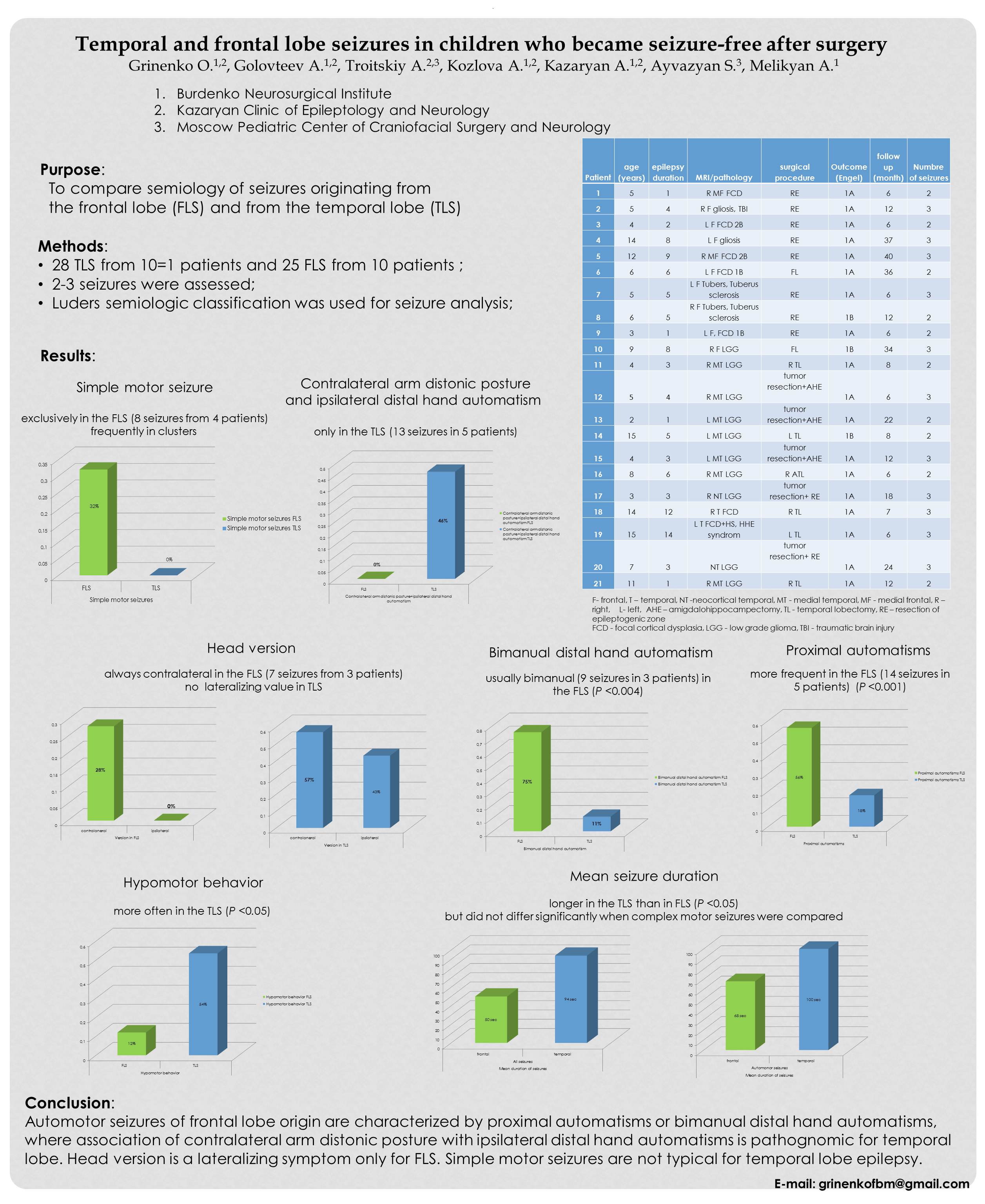Постерный доклад, представленный на 5th Interntional Colllquium Epilepsy. Lion
Temporal and frontal lobe seizures in children who became seizure-free after surgery.
Grinenko O., Golovteev A., Troitskiy A., Kozlova A., Kazaryan A., Ayvazyan S., Melikyan A.
Burdenko Neurosurgical Institute.
Kazaryan Clinic of Epileptology and Neurology.
Moscow Pediatric Center of Craniofacial Surgery and Neurology.
Purpose: To compare semiology of seizures originating from the frontal lobe (FLS) and from the temporal lobe (TLS) in children who became seizure-free after surgery.
Methods: We analyzed 28 videotaped TLS from 11 patients and 25 videotaped FLS from 10 patients aged 3.5–16 years (mean 8.1 years). In each patient 2-3 seizures were assessed. Median follow-up was 18 months (range 5–40 months). Luders semiologic classification (1998) was used for seizure analysis.
Results: Simple motor seizures occurred exclusively in FLS (8 seizures from 4 patients) and frequently were observed in clusters (3 patients). The mean seizure duration were longer in TLS than FLS (P <0.05), but did not differ significantly when complex motor seizures were compared. Version was always contralateral in FLS (7 seizures from 3 patients) and had no lateralizing value in TLS. Contralateral arm distonic posture occurred earlier in the FLS than in TLS whereas oral automatisms were observed later in FLS than in TLS.
Association of contralateral arm distonic posture with ipsilateral distal hand automatisms were seen only in the TLS (13 seizures in 5 patients) whereas in FLS distal hand automatisms were usually bimanual (9 seizures in 3 patients) (P <0.004). Proximal automatisms were more frequent in the FLS (14 seizures in 5 patients) than in TLS (5 seizures in 2 patients) (P <0.001) and hypomotor behavior was observed more often in the TLS (P <0.05) group.
Conclusion: Semiologic features of temporal and frontal lobe seizures differ in lateralizing significance as well as in time of onset.
